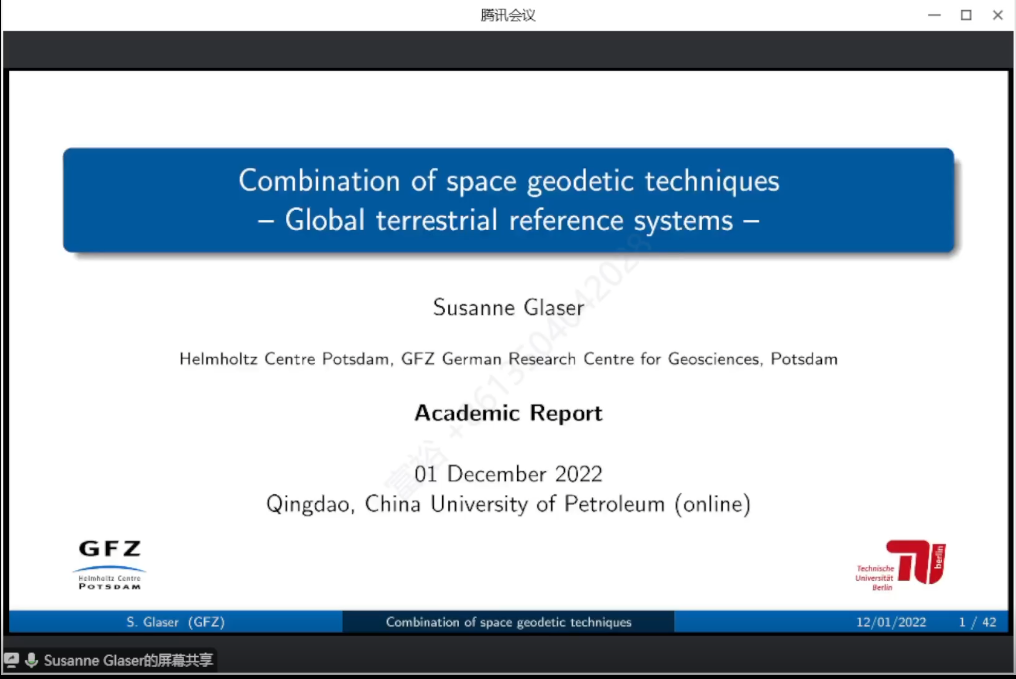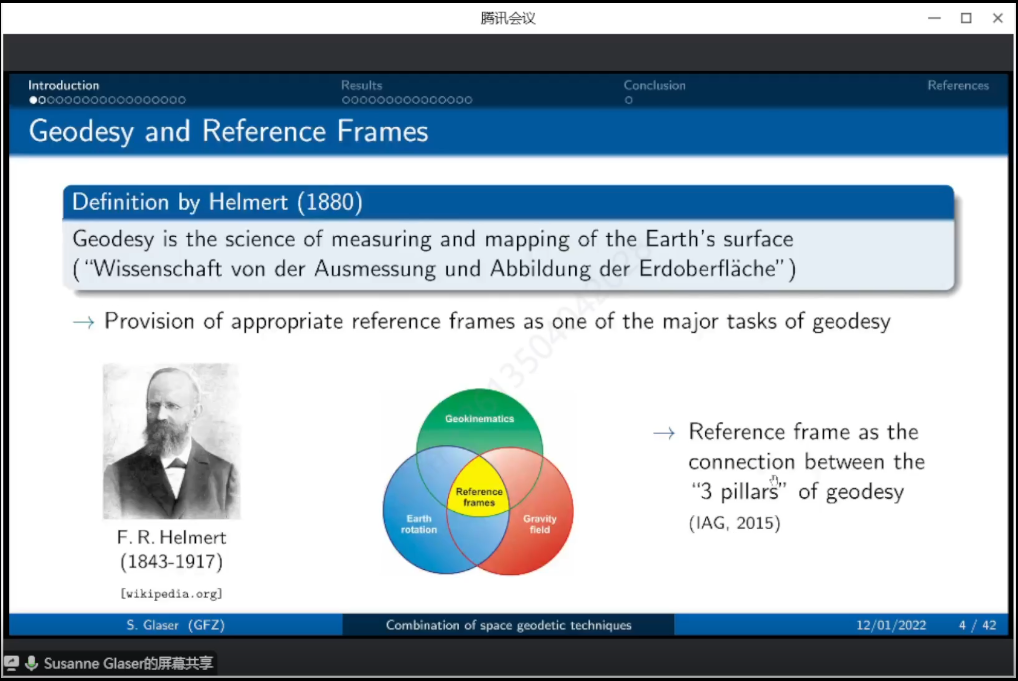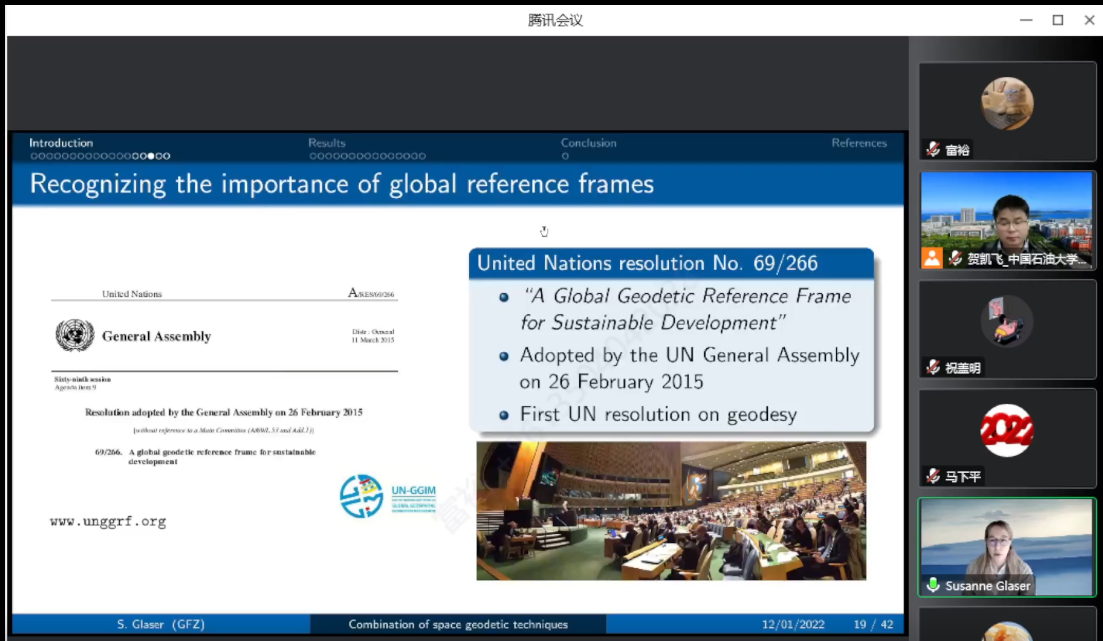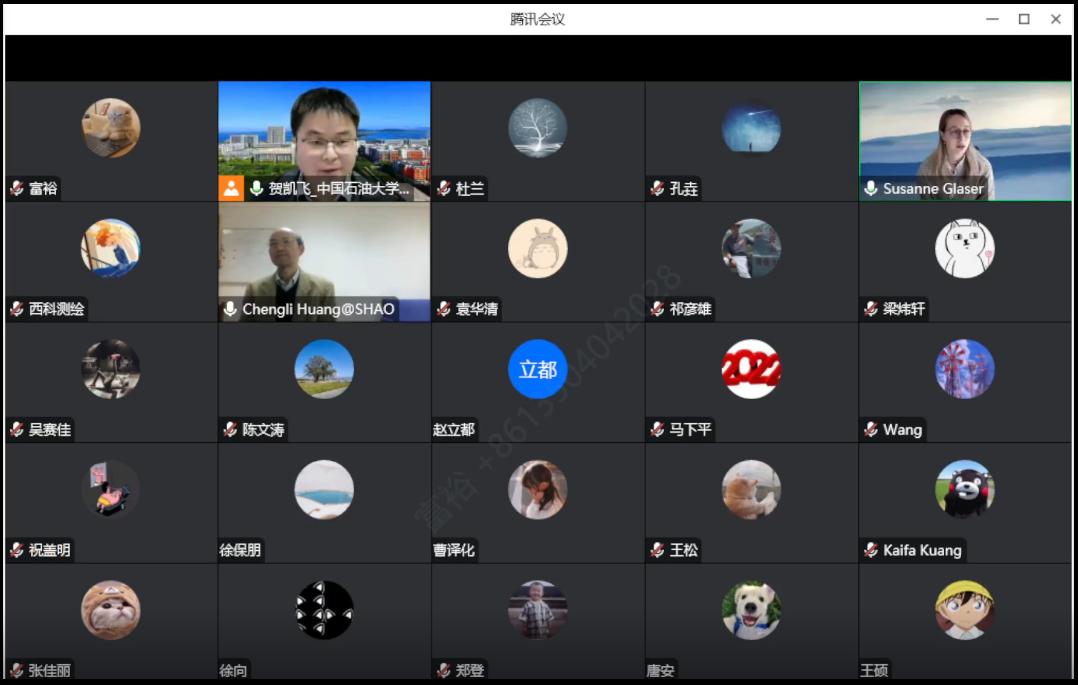
On December 1st, Prof. Susanne Glaser from the German Research Center for Geoscience (GFZ) was invited by Prof. Kaifei He to give an online academic report for the teachers and students of our college. During the conference, Prof. Susanne Glaser gave an academic report entitled:"Combination of space geodetic techniques - Global terrestrial reference systems".This academic report attracted experts and scholars in the field of geodesy, and postgraduate students online to participate in the exchange, and the report was hosted by Prof. Kaifei He.

Prof. Susanne Glaser began her presentation with an introduction to geodesy and reference frames, citing the Helmert definition of geodesy as one of the major tasks of geodesy, and that reference frames are the basis for the "3 pillars" of geodesy (Earth kinematics, Earth rotation, gravity field).
Then, space geodesy techniques are presented: GNSS (Global Navigation Satellite System), SLR (Satellite Laser Ranging), VLBI (Very Long Baseline Interferometry) and DORIS (Doppler Orbit Measurement and Radio Location Integrated by Satellite). A methodology for combining these space geodetic techniques to determine a global terrestrial reference frame (ITRF) is presented. The advantages and disadvantages of the various space geodesy techniques are analysed in some detail, and it is argued that only a rigorous combination of these techniques can produce a highly accurate and stable global ITRF.

Furthermore the importance of the ITRF, which is the basis of modern geodesy and provides the absolute reference for relative geodesy measurements and is essential for Earth system monitoring, was emphasised. Finally, Prof. Susanne Glaser investigated different combination strategies for the combination of space geodetic techniques, such as classical (local and global ties), and innovative concepts like space ties and tropospheric ties, and studied the influence of key parameters on the determination of the reference frame using simulated and partially real data.

In the discussion and exchange session, Prof. Chengli Huang from the Shanghai Astronomical Observatory of the Chinese Academy of Sciences, Dr. Kaifa Kuang from Beijing University of Civil Engineering and Architecture (China), and Prof. Kaifei He from China University of Petroleum (East China) had a lively discussion with Prof. Susanne Glaser and discussed in depth the key issues and technical developments of the geodetic reference frame and other cutting-edge issues respectively.

Dr. Susanne Glaser has been a Research associate at GFZ German Research Centre for Geosciences, Section 1.1: Space Geodetic Techniques since 2017 and is an IGS Associate Member. In 2021, she became the Head of working group “Combination of space geodetic techniques” at GFZ Potsdam Sec. 1.1. Since 2018 she has been a Guest lecturer at TU Berlin, Chair of Satellite Geodesy (with lectureship since 2020). Since 2022, she is the Member Editorial Board of Journal of Geodesy, Springer. She received a Diploma in Engineering (Dipl.-Ing.) in Geodesy and a Doctor of Engineering (Dr.-Ing.) in Geodesy at Technische Universität Dresden, Germany. Her research interests include Combination of space geodetic techniques, Terrestrial reference frames, and Simulation studies.
(Author: Yu Fu, Reviewer: Kaifei He, Source: College of Oceanography and Space Informatics)

